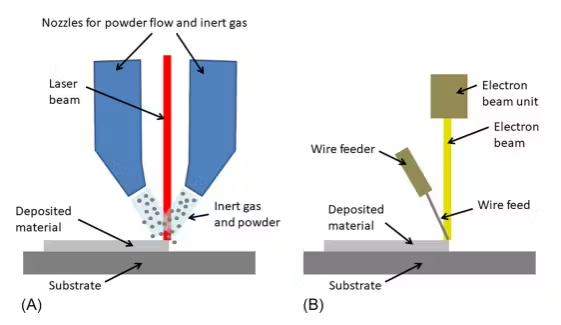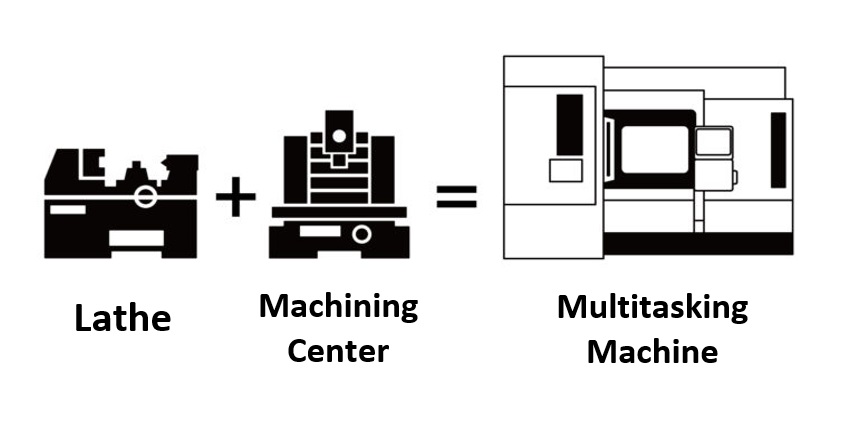How Deburring Creates Flawless Metal Parts
Leave a CommentYou may also like:
Racer Machinery International: Journey Through Generations
CNC Components: Mechanical Systems
CNC Lathes: What’s on the Horizon?
Imagine a perfectly machined gear – its teeth precisely cut, its surface a mirror reflecting the surrounding lights. But a closer inspection reveals a hidden enemy – tiny, sharp edges (burrs) clinging to its form. These unwelcome remnants are a byproduct of common metalworking processes like milling, drilling, and sawing. While these processes achieve the desired shape of the metal component, they can leave behind these imperfections. Deburring is the crucial step that removes these imperfections, transforming a good metal part into a truly exceptional one.
By ensuring smooth functionality, enhanced safety, and a longer lifespan, deburring plays a vital role in delivering high-quality metal components. Often overlooked, deburring is the unsung hero of the metalworking industry, silently ensuring the quality and performance of countless parts that form the backbone of our machines, buildings, and everyday objects.
Beyond Cosmetic Concerns: The Multifaceted Impact of Burrs
Burrs are more than just cosmetic blemishes. These raised edges, chips, or slivers of metal can have significant consequences if left unattended. Here’s why deburring is essential for your metal parts:
Improved Functionality: Burrs can hinder proper assembly and operation. During assembly, burrs can prevent components from fitting together seamlessly, leading to misalignment, binding, and increased friction. This can ultimately reduce a part’s efficiency and lead to premature wear and tear. Imagine a car engine where burrs on internal components cause friction and hinder smooth operation. Deburring ensures smooth, seamless interaction between components, guaranteeing proper function and optimal performance in the final product.
Enhanced Safety: Sharp burrs pose a safety hazard, potentially causing cuts or abrasions during handling or assembly. Workers handling metal parts without deburring are at risk of injuries, which can disrupt production schedules and raise safety concerns. Deburring eliminates these risks, creating safe-to-touch parts that prioritize worker safety throughout the manufacturing process.
Beyond Aesthetics: The Multifaceted Benefits of Deburring
While burrs can detract from the overall appearance of a metal part, their impact goes beyond aesthetics. In some applications, a clean finish is crucial for consumer products or components with visible surfaces. Creates a professional finish that enhances visual appeal. More importantly, deburring extends the lifespan of metal components. The uneven edges created by burrs can act as stress concentration points, concentrating stress and making the part more susceptible to cracking under pressure.
Deburring removes these weak points, promoting longevity and ensuring parts can withstand intended loads and stresses throughout their service life. Additionally, for parts requiring painting or other coatings, a smooth surface is essential for optimal adhesion and durability. Burrs can disrupt the coating process, leading to uneven application and potential peeling or flaking. Deburring creates a surface that allows for a strong, long-lasting coat, ensuring the aesthetics and functionality of the final product.
A Toolbox of Solutions: Deburring Techniques
There’s a deburring technique for every need. Metalworkers have a variety of methods at their disposal, each with its own advantages and applications:
- Abrasive Techniques: Versatile and suitable for various parts, these methods utilize abrasive materials like sandpaper, grinding wheels, or tumbling media to wear down and smooth out burrs. This approach is ideal for general-purpose and can be automated for high-volume production.
- Cutting Techniques: Offering precise control for delicate work, these techniques physically remove burrs using specialized tools like files, scrapers, and deburring knives. These methods are well-suited for intricate parts or areas that require a more delicate touch, ensuring minimal material removal.
- Thermal Deburring: This method utilizes heat, often in the form of a flame or plasma torch, to melt and vaporize burrs. This technique is ideal for hard-to-reach areas or small burrs on thin materials. However, it requires careful control to avoid damaging the surrounding metal.
- Chemical Deburring: Certain chemical solutions can dissolve or etch away burrs, particularly effective for removing small burrs from intricate parts. This method is often used for very small or delicate parts that cannot be with other techniques. However, it’s important to choose the right chemical solution for the specific metal to avoid unintended damage.
Choosing the Right Deburring Method
The ideal deburring technique depends on several factors, including the material’s hardness, part geometry, and burr size and location. By understanding the importance of deburring and the various techniques available, manufacturers can make informed decisions to ensure their metal parts function smoothly, are safe to handle, and achieve a long lifespan. Deburring may seem like a small step in the metalworking process, but its impact is undeniable. It’s the invisible guardian that ensures the quality, safety, and performance of the metal components that shape our world.
From the intricate gears in a high-precision machine to the structural beams in a towering skyscraper, deburring plays a vital role in their smooth operation and long-lasting integrity. In today’s world of automation and mass production, deburring techniques have also evolved.
The Rise of Automation: Deburring in the Modern Age
Manual deburring, while still used for delicate parts or small-batch production, has become increasingly complemented by automated solutions. Robotic arms equipped with specialized tools can perform deburring tasks with greater speed, consistency, and precision. These automated systems can handle high-volume production runs efficiently, ensuring consistent quality control throughout the process. Additionally, advancements in technology have led to the development of innovative deburring methods like vibratory finishing and laser deburring.
Vibratory finishing utilizes a combination of abrasive media and a vibrating tub to remove burrs from parts. This method is particularly effective for complex shapes and delicate components. Laser deburring, on the other hand, uses a highly focused laser beam to melt and vaporize burrs with exceptional precision. This technique is ideal for very small burrs or hard-to-reach areas.


